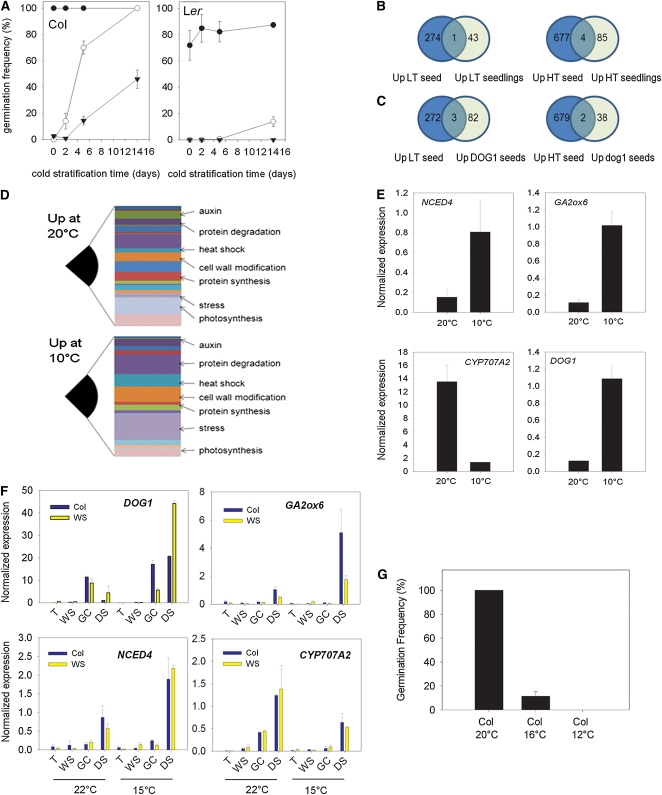Figure 1.
Transcriptional Changes in Dry Seeds Matured at 20°C versus 10°C.
(A) Germination behavior of freshly harvested wild-type Col-0 and Ler seeds matured at 10°C (closed triangles), 15°C (open circles), and 20°C (closed circles) and the response to cold stratification. Data represent mean and se (n = 5).
(B) Numbers of transcripts significantly different between the 10°C (LT) seeds and the 20°C (HT) seeds and a comparison with a similar experiment performed on 10-d-old seedlings. Numbers for transcripts significantly different (P < 0.01) with a magnitude change of at least threefold are shown.
(C) Comparison of our data with that from DOG1 and dog1 loci (Bentsink et al., 2010). There is little overlap between the two data sets.
(D) Analysis of differentially regulated genes by TAGGIT (Carrera et al., 2007). For description of overrepresented gene ontologies, see main text.
(E) Confirmation of microarray gene expression changes by real-time RT-PCR. Low seed maturation temperatures induce GA2ox6, DOG1, and NCED4 expression, whereas warm seed maturation temperatures induce high CYP707A2 expression in dry seeds. Data represent the mean and se of two biological replicate samples for each temperature.
(F) Temperature-regulated gene expression during seed development and maturation. Analysis on Col and Ws backgrounds confirms the microarray results, which are from Ler. Data represent the mean and se of two biological replicates per time point. T, torpedo stage; WS, walking stick stage; GC, green cotyledon stage; DS, dry seed at maturity.
(G) High seed maturation temperatures remove the light requirement for germination. Seeds matured at three temperatures were incubated in the dark at 4°C for 50 d and germination scored. Data represents the mean and se of five independent seed batches

